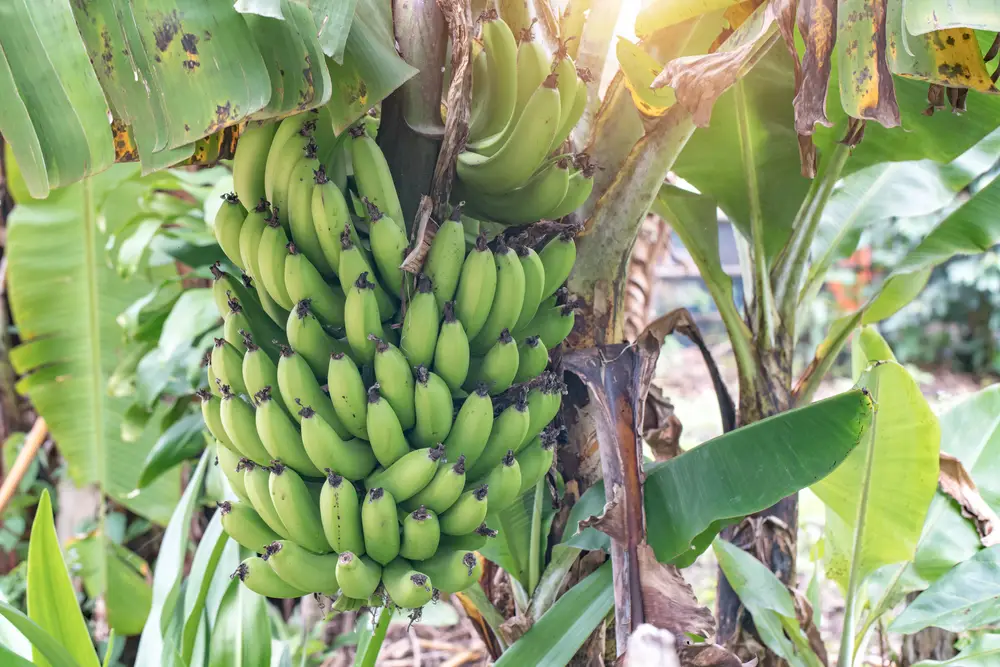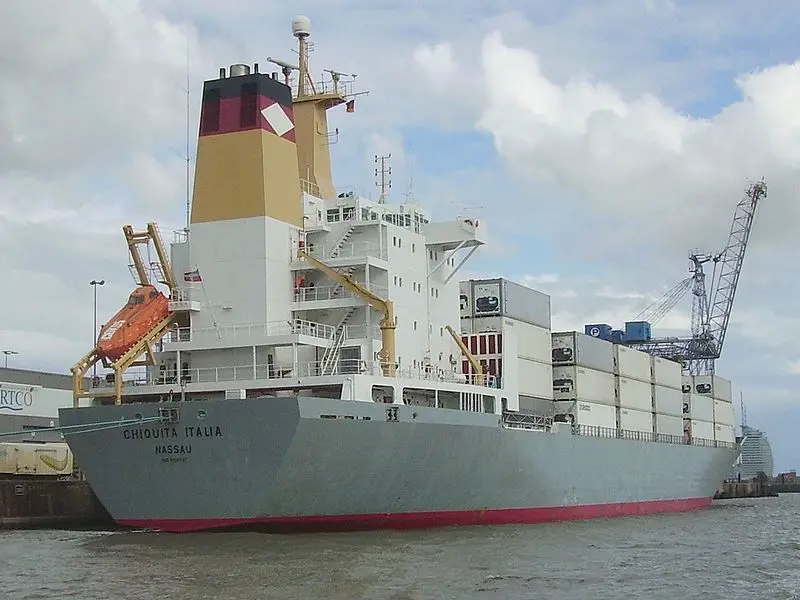We may take for granted that a yellow banana greets us at the supermarket, but the journey for that one piece of fruit is a long one, especially for a fruit that can go bad rather quickly.
Where Do Bananas Grow?
Bananas are considered a fruit, but botanically they are classified as a berry. The banana plant is the largest herbaceous flowering plant and grows to about ten feet in height. Most banana plants grow within 30 degrees of the equator in 150 different countries spread around the globe.
There is no growing season for bananas, and they are available year-round. The time between planting a banana plant and the harvest is between 9 and 12 months, and a bunch on a banana plant produces around 170 bananas.
The Banana’s Trip
A banana’s journey from their faraway growing regions to a place like the United States is made possible in modern times because of the advances in refrigeration. The banana bunches are cut down when they are still solid green on the banana plant. This is the first stage of ripening out of seven stages that the industry uses. The almost exclusive variety of bananas being shipped to the United States is the Cavendish variety. Until the 1950s, the banana of choice was the Gros Michel, but it was completely wiped out due to a fungus.
After the bananas are harvested, the fruit is inspected, washed, separated, and packed into boxes. The bananas are refrigerated almost immediately to prevent them from ripening. The bananas are then put on reefer ships, which are refrigerated container ships. The bananas are finally ready to start their long journey.
Bananas are kept at around 58 degrees Fahrenheit during their journey to halt the ripening process. If bananas are coming from Central America, they travel the Atlantic or the Pacific Ocean and may go through the Panama Canal to get to the United States.
There are three main fruit companies that import bananas to the United States; Dole, Del Monte, and Chiquita. Dole owns and operates a total of 19 vessels, which make it the largest refrigerated fleet of reefer ships in the world. Each 40-foot container on the ship can hold 1,000 boxes, with each box holding about 100 bananas. Del Monte has a fleet of 15 owned and eight chartered refrigerated vessels. Both companies use their ships to move other fruit in addition to bananas.
Chiquita once operated the largest private fleet in the world at 100 refrigerated ships when it was the United Fruit Company. The United Fruit Company was founded in 1899. Its fleet of ships was known as the Great White Fleet since the ships were painted white so they would reflect the sun and reduce the chance of the fruit spoiling. The company sold its last 12 remaining vessels in 2007 and now charter other ships to move their bananas.
When the bananas finally arrive in port, they are offloaded and go through customs. Surprisingly, the busiest banana port in the United States is in Wilmington, Delaware, where they take in about a million tons of bananas a year. It’s also the second busiest port for bananas in the world and sits only behind Antwerp, Belgium.
The Ripening Process
The bananas are next moved to a specialized ripening facility. They begin this part of their journey in a room that is well-ventilated and sits with a relative humidity between 70 and 90 percent. Ethylene gas is then released in the room overnight to begin the process of ripening. Ethylene gas is what is naturally released as a fruit ripens.
The gas is then removed, and the room temperature is kept in the low 60s. The bananas finally begin to change color, and the facility can even ship bananas at different stages of ripening depending on what the distributor wants and the distance the bananas still have to travel. There are seven stages of ripening, and ripening at the specialized facility takes about five days. The bananas are then ready to go to regional distribution centers where they are then shipped to supermarkets.
The banana is then put on a supermarket shelf for you to buy. Many are still green with just a bit of yellow so you’ll still have time to enjoy the fruit before they turn into a mushy mess.
Sources: NY Times, Chiquita, National Geographic, Freakonomics, Flexport, Port of Wilmington, Del Monte, Atlas Obscura, Hofstra University




